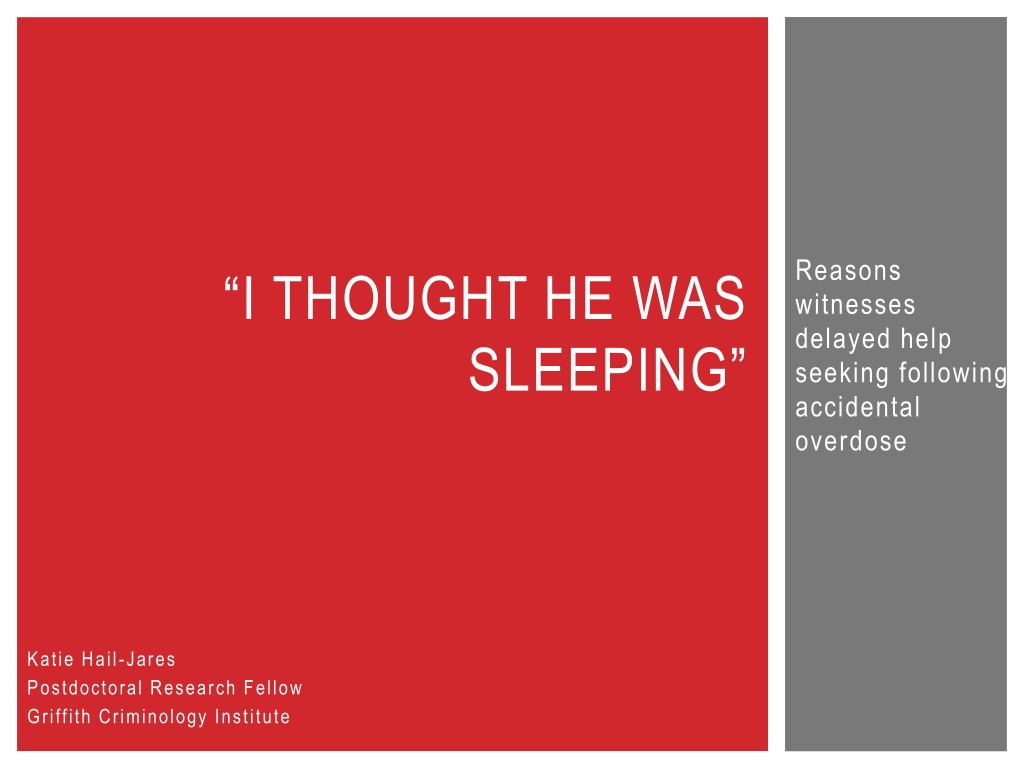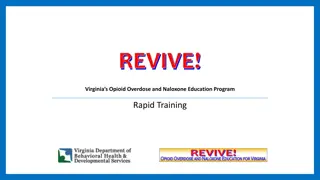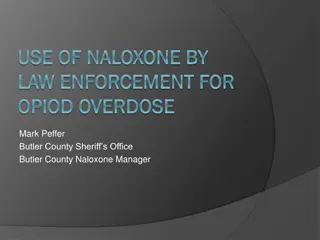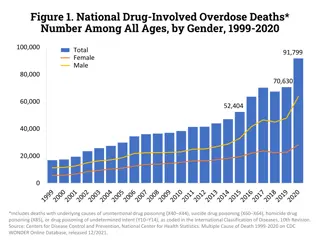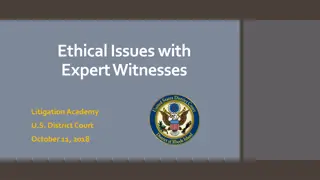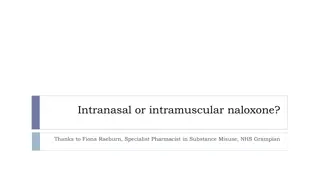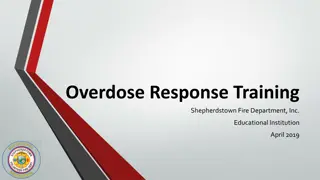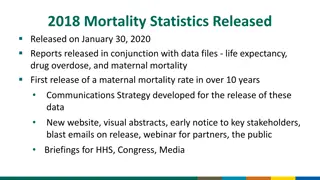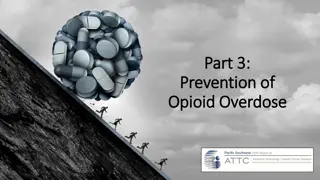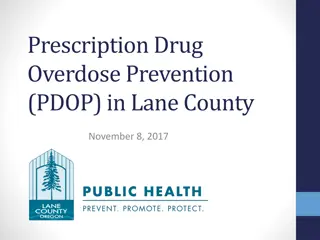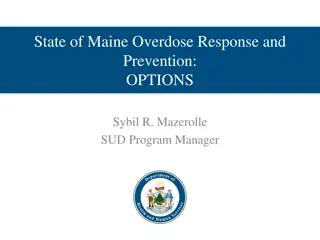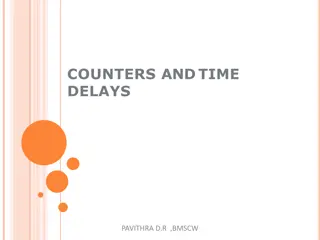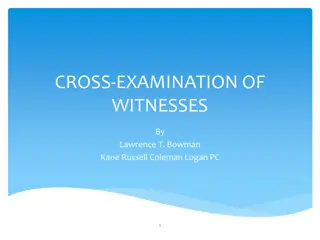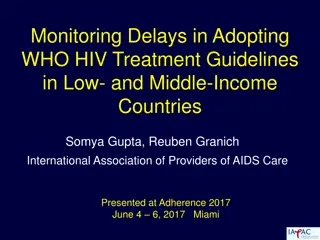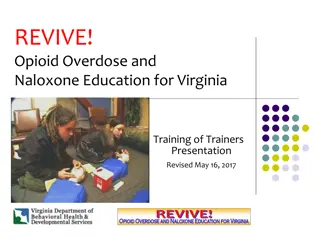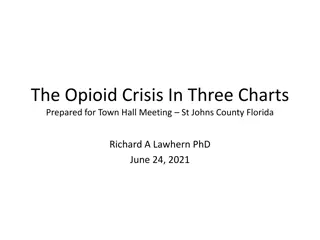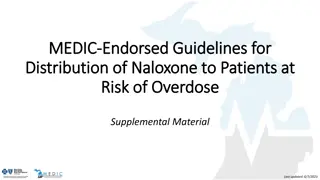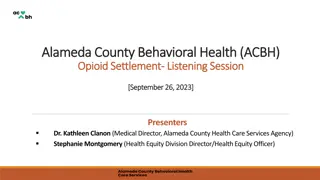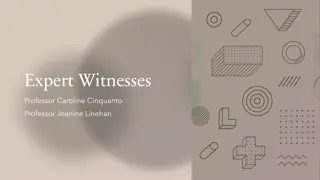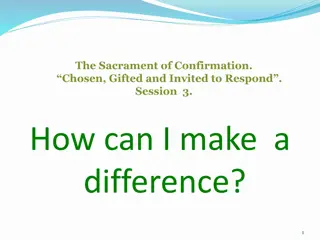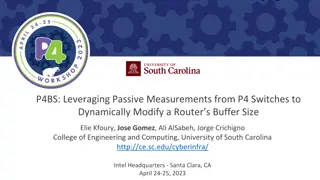Delays in Seeking Help Following Accidental Overdose: Understanding Witnesses' Perspectives
Exploring the reasons behind witnesses delaying help-seeking after an accidental overdose, this study by Katie Hail-Jares delves into incarceration, loss of tolerance, social support systems, and witness behavior. It highlights the challenges of witness reporting in substance use settings and the impact of reentry post-incarceration on overdose rates, emphasizing the need for better support systems for justice-involved individuals.
Uploaded on Sep 27, 2024 | 0 Views
Download Presentation

Please find below an Image/Link to download the presentation.
The content on the website is provided AS IS for your information and personal use only. It may not be sold, licensed, or shared on other websites without obtaining consent from the author. Download presentation by click this link. If you encounter any issues during the download, it is possible that the publisher has removed the file from their server.
E N D
Presentation Transcript
Reasons witnesses delayed help seeking following accidental overdose I THOUGHT HE WAS SLEEPING Katie Hail-Jares Postdoctoral Research Fellow Griffith Criminology Institute
OVERVIEW Incarceration and accidental overdose Witnesses and accidental overdose Current project Findings Discussion
INCARCERATION & AOD Reentry following incarceration is linked to higher rates of fatal accidental overdose Loss of tolerance Loss of good injecting practice Loss of social support systems Limited information about how these findings translate into justice- involved young people
WITNESSES & AOD Most accidental overdoses are witnessed 85% Australian opiate uses (Darke & Ross, 1997) 97% London methadone users (Strang et al, 2000) 73% San Francisco IDU< 30 years old (Davidson et al, 2002) Calls to emergency services following an AOD remain low comparatively Fear of arrest but this fear can be mitigated Conflation of ability with behaviour who does report?
YOUTH JUSTICE MORTALITY PROJECT 165 AOD 1,064 NCIS 1,529 members died 46,387 YJ involved young people (QLD, 1993-2014)
NATIONAL CORONIAL INFORMATION SYSTEM Contains medico-legal data about all deaths reported to the Coroner in Australia and New Zealand since 01 July 2000 (or after 01 January 2001 for Queensland) What makes a death reportable? Suspicious Unnatural/violent In care/In custody Typical NCIS file contains Police Report Coroner s Findings Toxicology Report Autopsy Report Note about the Australian coroner
METHODS Qualitative project Grounded theory from textual data Coding Number of witnesses, nature of witnesses, presence during OD, knowledge of drug use, administration of LS techniques, immediately reported Issues with administrative data
WHO ARE WITNESSES? Witness Characteristics N % Total number of witnesses (n=159) None 2 1.3 1 81 50.9 2 49 30.8 3 13 8.2 >3 4 2.5 Unspecified 10 6.3 Relationship of the reporting witness to the deceased (n=157) Partner (current or former) 37 23.6 Family 28 17.8 Friend 37 23.6 Acquaintance 15 9.6 Stranger 18 11.5 Roommate 16 10.2 Relationship Unknown 6 3.8
WITNESSES & THEIR RESPONSES Did any of the witnesses know about the deceased s drug use? (%Yes) 65.2% Reporting Witness (n=155) 56.3% Other witnesses (n=71) Were any witnesses using with the deceased? (%Yes) 23.9% Reporting witnesses (n=156) 18.1% Other witnesses (n=72) Did any witnesses provide CPR? (%Yes) 38.2% Did any witnesses provide naloxone (%Yes) 0% (5% explicitly no) Did any witness immediately call EMTs once the deceased started to show signs of an overdose? (n=157) 51.0% Yes (n=80) 47.8% No (n=75)
REASONS FOR DELAY Witness thought deceased was asleep or passed out (42.7%) Lived or used alone (29.3%) Assumed AOD was a normal high or waited too long (5.3%) Witnesses also using (9.3%) Other reasons (13.3%)
1. THOUGHT DECEASED WAS ASLEEP DEC's mother and girlfriend left the house around 1115 to 1130 hours to go out, the deceased appeared to be still sleeping at this time. The deceased's father returned home shortly after 1130 hours and walked past the deceased to get upstairs. He noticed the deceased on his side in the bed. His father and the deceased were to spend the afternoon together but his father did not wake the deceased as he appeared to be sleeping peacefully. The father and his daughter had lunch and watched a movie before the father had a short sleep on the couch. He awoke around 1600 hours and went to wake the deceased as the whole family were to have dinner together. He could not wake the deceased." (Case 140)
1. THOUGHT DECEASED WAS ASLEEP A male witness had advised police that he saw this motorcycle with the deceased sitting on it and its headlights switched on at about 10 PM [ ] At that time the witness stated the deceased was slumped over the fuel tank of the motorcycle and making a gurgling sound. The witness stated he spoke to the deceased but received no reply and thought the deceased was drunk and that is why he did not report it to police at the time. Another female witness stated she saw the deceased lying on the ground beside the motorcycle at 0530 hrs when out walking with her husband but thought the deceased was drunk" (Case 48)
2. LIVED OR USED ALONE At about 8:30 on the morning the reporting witness attempted to gain entry to the male toilet. It appeared there was a person inside blocking entry and the police were contacted. Police were able to access the toilet where it was discovered the body of male person who was deceased [...] Police also spoke with the cleaner responsible for locking the toilet block. She indicated she went to lock up the toilets at about 5:10 that previous afternoon. The lights were out in the male toilet but it appeared to be locked from the inside and the cleaner realised it was in use. She therefore left. (Case 127)
3. ASSUMED AOD WAS NORMAL HIGH Neighbour stated to Police that at about 12:00pm the deceased s girlfriend was calling out his name in the house. After hearing this the neighbour walked. Once at the house the neighbour observed the deceased to be sitting down in a hunched over position in the hallway of the house. The neighbour also stated that the deceased was incoherent however he was breathing. At this time both witnesses lifted the deceased onto the bed in the back spare room. At this time neighbour asked the deceased s girlfriend as to what was going on. She said that the deceased had taken OxyContin. The neighbour stated he had seen the deceased in worse condition. Twelve hours later, the girlfriend contacted neighbour again and asked if he could come over and help her to move the deceased. After five minutes the neighbour arrived at the house and found the deceased in the same position as he had seen him last. The witnesses decided to roll the deceased onto his side, then the neighbour left. Four hours later, the neighbour was woken by the girlfriend calling him again. The neighbour observed the deceased on the bed on his right side with vomit in his nose and mouth. The neighbour has then tried looking for a pulse on the deceased and at this time girlfriend stated "Should I call for an ambulance" and neighbour replied "Yes. (Case 129)
4. WITNESSES ALSO USING The reporting witness produced a quarter of a 100microgram Fentanyl patch, melted the patch down. [ ] Both the deceased and reporting witness extracted 1 mL each into the syringe via a filter. Each injected themselves on their own. Both the deceased and reporting witness passed out. [ .] When the reporting witness woke, he tried to wake the deceased without success. They pair were located by emergency services officers at 2100hrs, who immediately commenced CPR" (Case 80)
5. OTHER REASONS At about 04.00 hours , the deceased s sister heard a loud bang and she went to the toilet door and tried to get it open but could not. She was reluctant to call emergency services as her brother was wanted on a return to prison warrant. She spoke to her brother s girlfriend who told her to call 000 and she did so. Emergency services attended. They found the DEC deceased on the toilet floor. (Case 167)
DISCUSSION Unique findings to young people At home; many of the witnesses were family members Lack of knowledge about first aid (or naloxone on hand) despite prior knowledge of use Need for establishing programming for family members Need for establishing overdose prevention sites (safer consumption sites) Limitations Chicken and the egg
